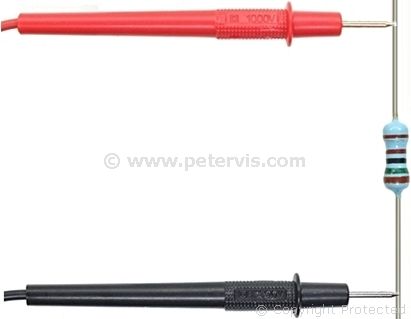DT830B Resistance Measurement

The DT830B has five range settings for measuring resistance with the highest setting being 2000-kilo-ohms (or two-mega-ohms). Beginners are often confused and do not know which setting to use. If you know your resistor colour code, then you can set the range precisely, otherwise the standard procedure is to start with the lowest range and work your way up until you get a reading.
When measuring resistance, switch OFF the power to the circuit you are measuring, and let the electrolytic capacitors discharge before taking measurements. This is necessary because the current flowing in the circuit may influence the reading.
Reading a Resistance Value
A 3½-digit Liquid Crystal Display (LCD) is not able to display all the zeros to represent a kilo, hence the 20 k, 200 k, 2000 k, range settings are such that the readout value is in kilo ohms.
Example Measurement

Here is an example showing how to measure resistance. The probes may be on either side when measuring resistance, and in this example, the meter reads 1503 Ω.
Resistance Resolution and Accuracy
| Range | Resolution | Accuracy |
| 200 | 0.1 | ± (1.0 % of reading + 10D) |
| 2 k | 1 | ± (1.0 % of reading + 4D) |
| 20 k | 10 | ± (1.0 % of reading + 4D) |
| 200 k | 100 | ± (1.0 % of reading + 4D) |
| 2000 k | 1000 | ± (1.2 % of reading + 4D) |
This Article Continues...

DT830B Digital Multimeter
DT830B Inside View
DT830B Range Switch Assembly
DT830B Transistor Test
DT830B DC Voltage
DT830B Resistance Measurement
DT830B Diode Test
DT830B Current Measurement
DT830B 10 A Setting
DT830B AC Voltage Measurement
Intersil ICL7106 and ICL7107